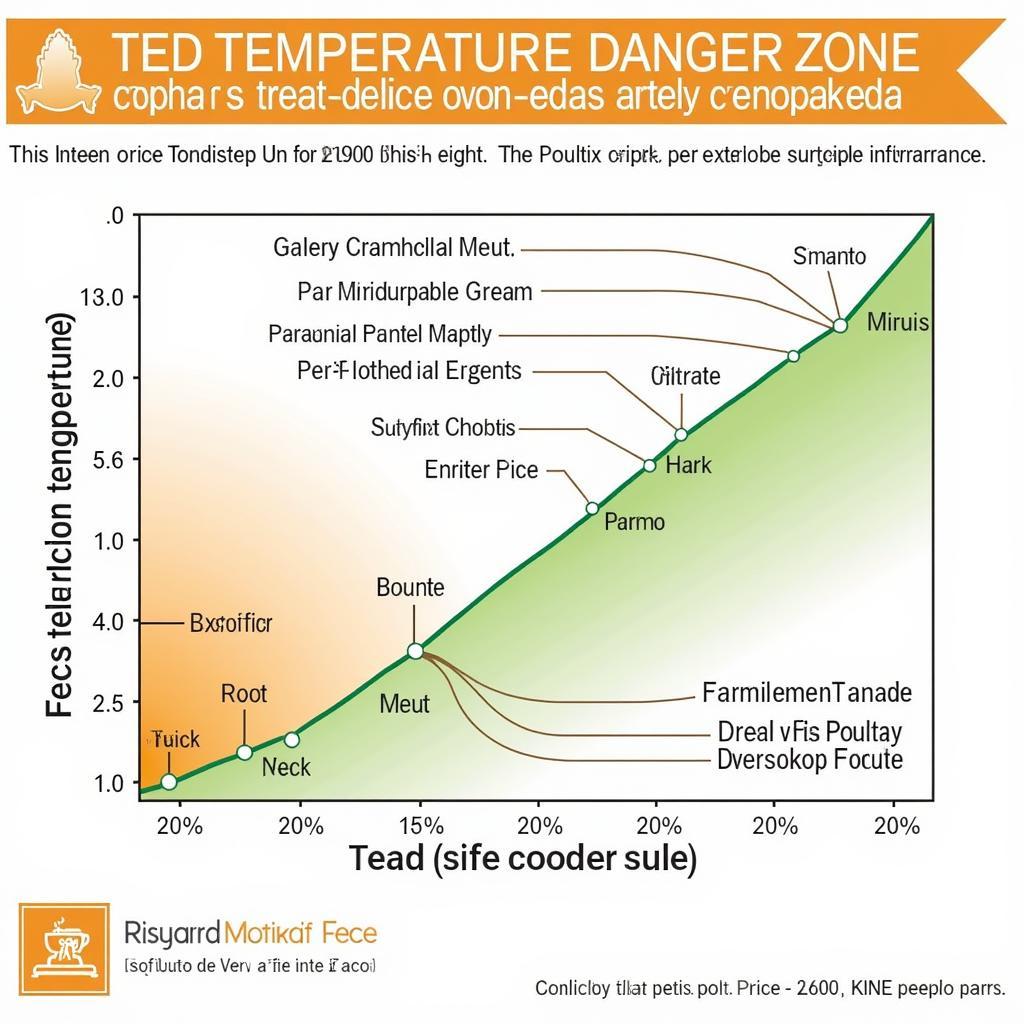Maintaining food safety is crucial, whether you’re running a bustling restaurant or simply prepping a meal at home. One of the most important tools in your arsenal? A food temperature log sheet. This simple document plays a vital role in preventing foodborne illnesses by ensuring your ingredients and prepared dishes stay within safe temperature zones.
Why is a Food Temperature Log Sheet Important?
Before we dive into the specifics, let’s understand why a food temperature log sheet deserves a prime spot in your kitchen.
- Preventing Foodborne Illness: Incorrect food temperatures create a breeding ground for harmful bacteria, putting you and your customers at risk. Regularly logging temperatures allows you to catch potential hazards before they reach the plate.
- Meeting Regulatory Requirements: In many places, food establishments are legally obligated to keep accurate temperature logs. This helps demonstrate compliance with food safety regulations.
- Improving Food Quality: Temperature fluctuations can negatively impact the texture and flavor of your dishes. Consistent temperature monitoring helps ensure optimal quality and delicious results every time.
How to Use a Food Temperature Log Sheet Effectively
Using a food temperature log sheet is straightforward. Here’s a step-by-step guide:
- Download a Template: You can easily find free downloadable templates online, like the one offered later in this article.
- Record Basic Information: At the top of the sheet, note the date, time, and the specific area or equipment you’re monitoring (e.g., refrigerator, oven).
- Identify Food Items: Clearly list all the food items you’re checking.
- Take Accurate Temperatures: Use a calibrated food thermometer to measure the internal temperature of each food item.
- Record and Verify: Write down the measured temperature in the appropriate column. Double-check that it falls within the safe range.
- Take Corrective Action (If Needed): If a temperature is outside the safe zone, take immediate steps to rectify the situation (e.g., cook further, refrigerate immediately).
Understanding the Danger Zone
The “danger zone” for food is between 40°F (4°C) and 140°F (60°C). Within this range, bacteria multiply rapidly. Your food temperature log sheet helps you keep foods out of this danger zone.
 Food Temperature Danger Zone Chart with Safe Cooking Temperatures
Food Temperature Danger Zone Chart with Safe Cooking Temperatures
Choosing the Right Food Temperature Log Sheet
While a simple template might suffice for home use, commercial kitchens often require more comprehensive logs that track additional details, such as:
- Employee Initials: To ensure accountability and track who took which measurements.
- Corrective Actions: A dedicated section to document any corrective actions taken if temperatures are outside the safe range.
- Calibration Records: A log of when thermometers were last calibrated to ensure accuracy.
Free Food Temperature Log Sheet PDF
Ready to step up your food safety game? Download our free, printable Food Temperature Log Sheet Pdf: [Insert Download Link Here].
FAQs about Food Temperature Log Sheets
1. How often should I record temperatures?
Ideally, you should check and log temperatures at least twice daily: once at the beginning of your shift and again before closing.
2. Can I use a regular thermometer instead of a food thermometer?
No, a calibrated food thermometer is specifically designed to provide accurate readings for food safety.
3. Do I need to keep temperature logs indefinitely?
Most health departments require you to retain temperature logs for a specific period. Check local regulations for specific guidelines.
Need More Help with Food Safety?
Navigating the world of food safety can be daunting. At Mina Cones Food, we’re passionate about helping you create a safe and delicious culinary experience. Contact us at 02437655121, email us at minacones@gmail.com, or visit our website at [website address]. Our dedicated team is here to answer your questions, offer expert advice, and provide the resources you need to master the art of food safety.